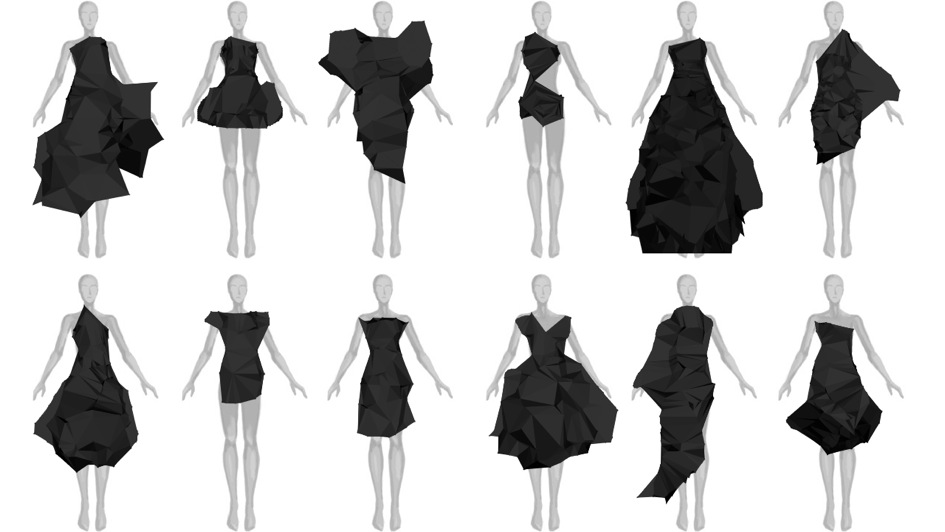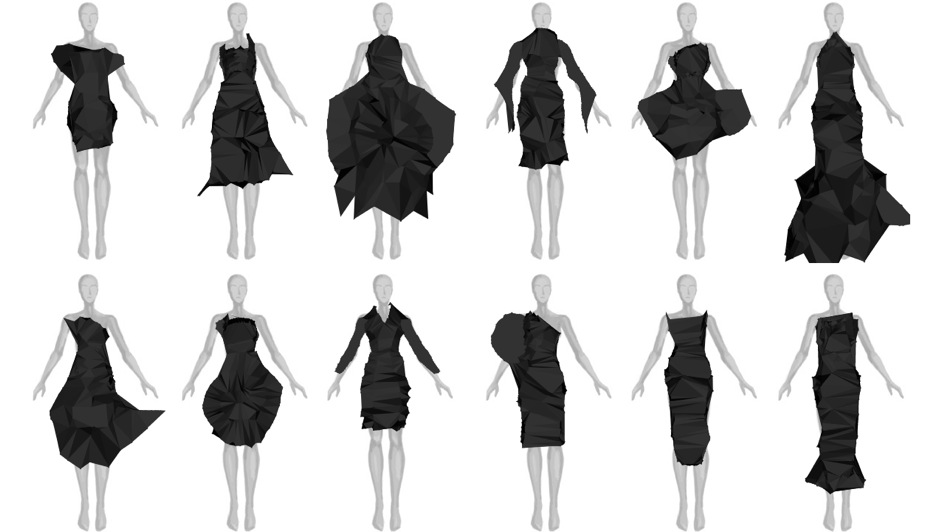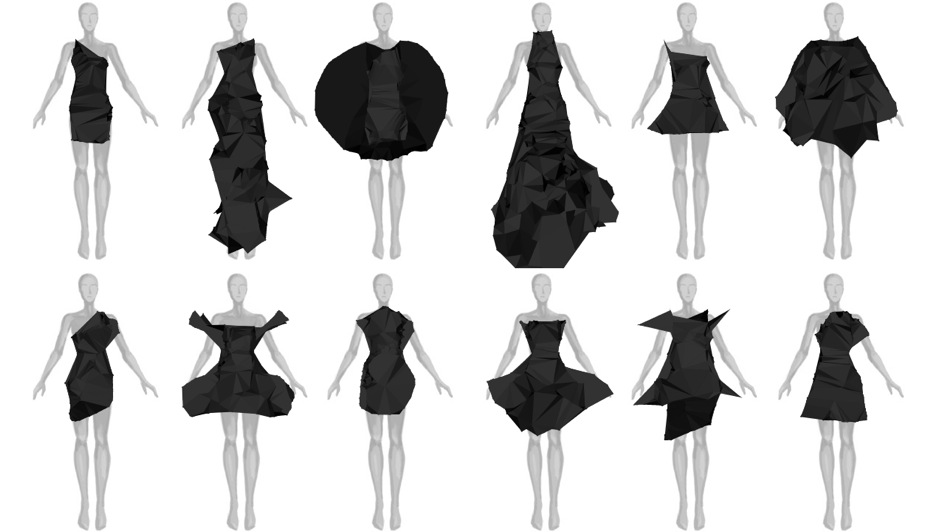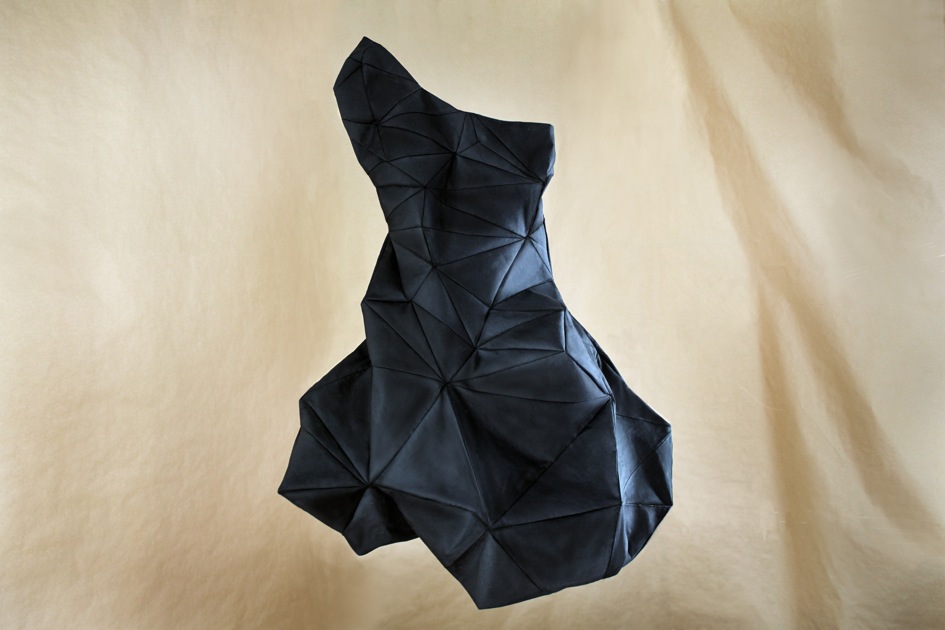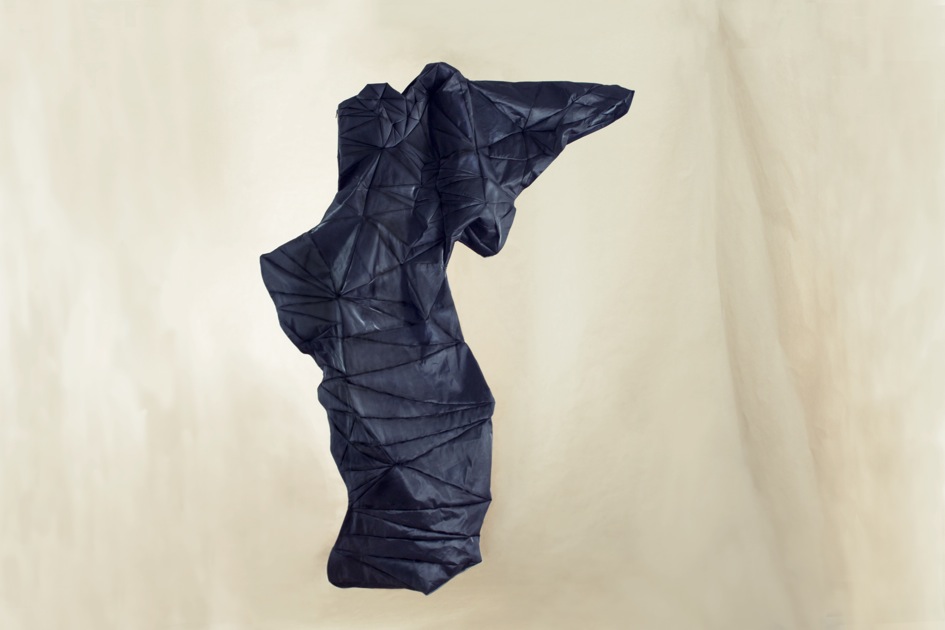The future of fashion, and the future of consumer products in general, lies not only in more advanced technologies and materials, but also in reevaluating the very infrastructure of design, manufacture, and retail. By blending rapid fabrication, interactive software, and the accessibility of the web, we can let individuals participate directly in the design and production process.
In short, the "D" collection is actually a piece of software. The D.dress app lets you draw a dress, turns it into a 3D model, and exports a cutting pattern to make the real dress, sized to your measurements. A laser cutter or plotter cuts the pattern out of fabric, which is then sewn into the dress. All the designs are unified around the theme of the little black dress, and the triangulation used in the software. This allows basically everyone to create their own innovative dress design.
This design approach of using triangles came out of both consideration for aesthetics as well as acknowledgement of limitations. There exist many types of industry software made for fashion designers to design in 3D that try to simulate cloth, but they are not widely used because the cloth simulation is never good enough to inspire faith in how the design will look. So, I took the opposite approach of not trying to simulate cloth digitally at all, but rather chose a technique that makes cloth seem more digital. Lo-res triangular models are more abstract, but this abstraction prompts people to imagine what the resulting dress would look like rather than expect an exact rendition of the screen image. The triangulation also insures that almost any drawing will produce an interesting form, and in fact produces good meshes from mere scribbles. This allows a great ease of use as you can design an avant-garde dress in under a minute, without any skill in drawing.
